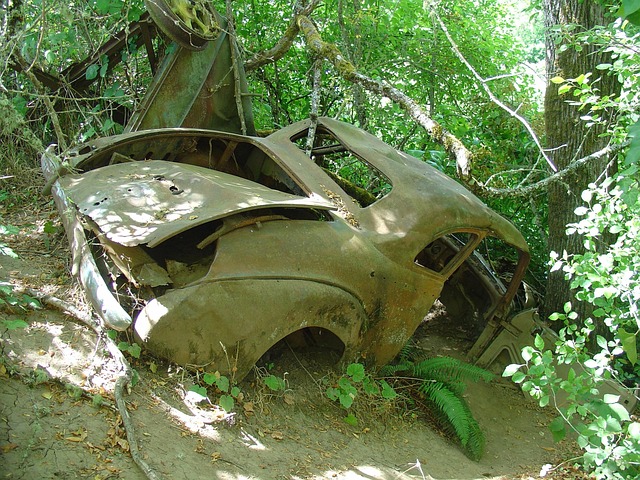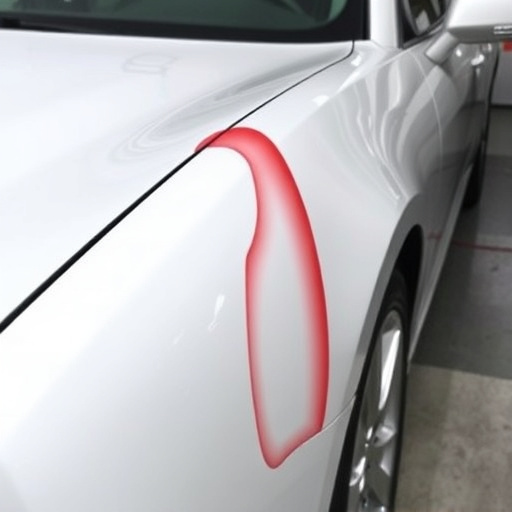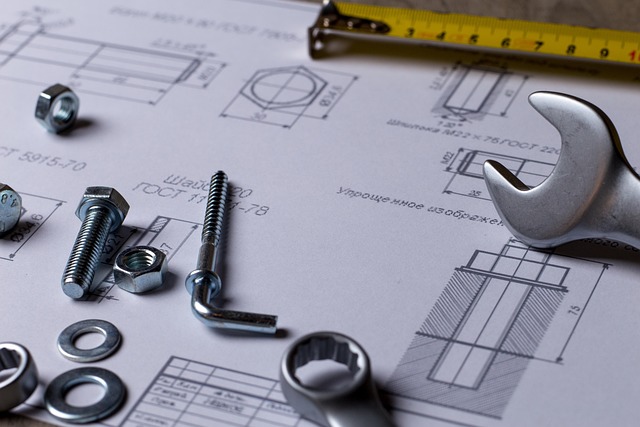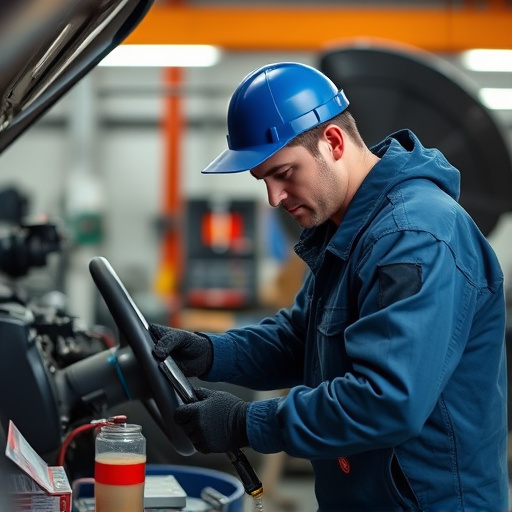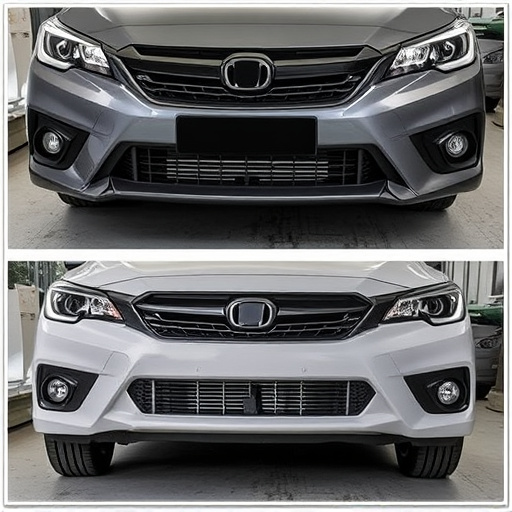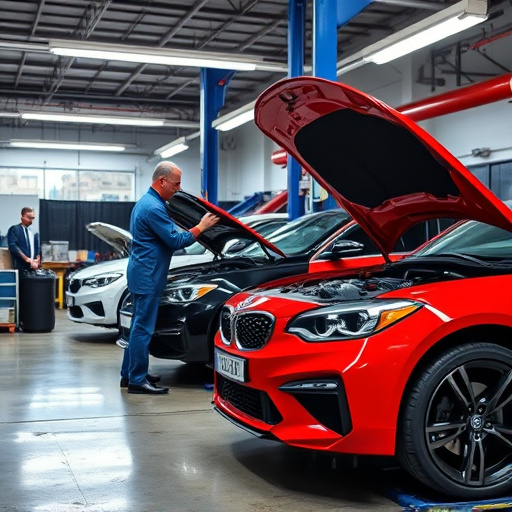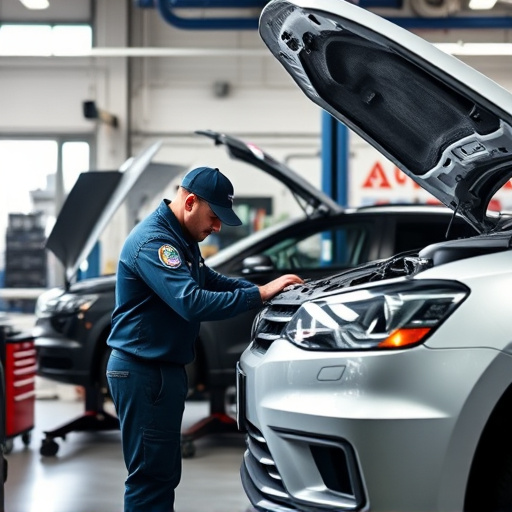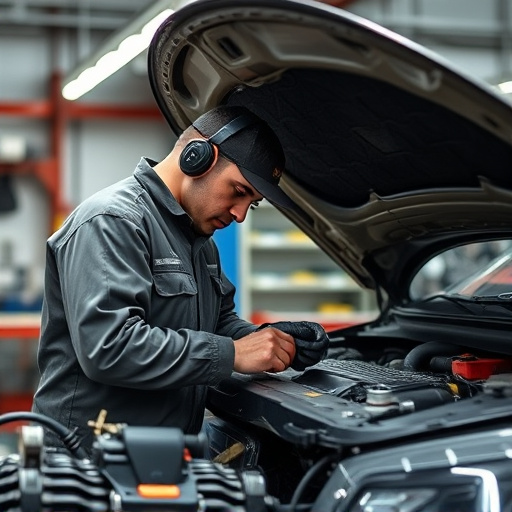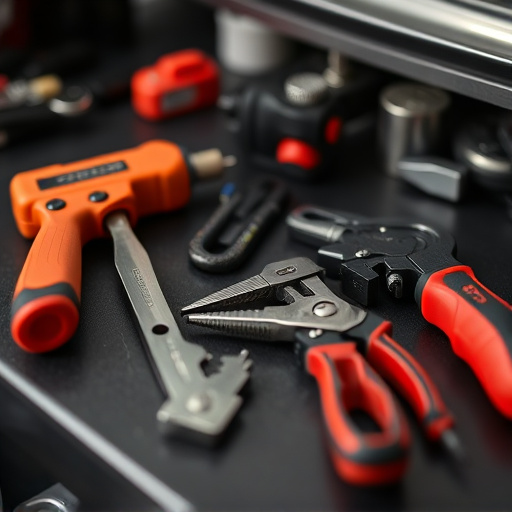Tesla's specialized structural repair training equips auto body specialists with the skills needed to safely repair electric vehicles' unique construction and high-voltage systems, ensuring precise work and preserving advanced EV technology while adhering to evolving safety standards. The program combines hands-on experience, virtual simulations, and interactive modules to offer comprehensive, up-to-date instruction guided by industry feedback.
“Tesla vehicles, renowned for their innovative technology, demand specialized care during repairs, especially concerning structural and high-voltage systems. This article delves into the critical aspects of Tesla structural repair training and high-voltage safety protocols. We explore how comprehensive programs ensure technicians are adept at handling complex repairs while prioritizing safety. By examining implementation strategies and continuous improvement, we highlight the importance of up-to-date training for both technicians and vehicle integrity.”
- Understanding Tesla Structural Repair Training: A Comprehensive Overview
- High-Voltage Safety Protocols: Protecting Technicians and Vehicles
- Effective Implementation and Continuous Improvement in Training Programs
Understanding Tesla Structural Repair Training: A Comprehensive Overview
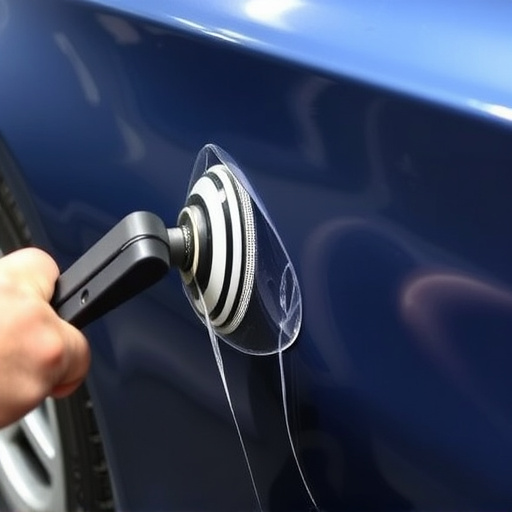
Tesla structural repair training is a specialized program designed to equip auto body specialists with the knowledge and skills necessary for handling Tesla vehicles’ unique construction and high-voltage systems. This comprehensive overview goes beyond basic auto body work, delving into the intricate details of electric vehicle (EV) repairs. Participants gain insights into Tesla’s advanced manufacturing techniques, learning how to navigate their labyrinthine structures with precision.
The training emphasizes safety, particularly when dealing with high-voltage components. It teaches practitioners to identify and mitigate risks associated with lithium-ion batteries and electrical systems, ensuring they can perform car bodywork repairs without compromising the vehicle’s integrity or safety. This specialized knowledge is crucial in a rapidly evolving automotive industry where EV technology continues to redefine driving standards.
High-Voltage Safety Protocols: Protecting Technicians and Vehicles
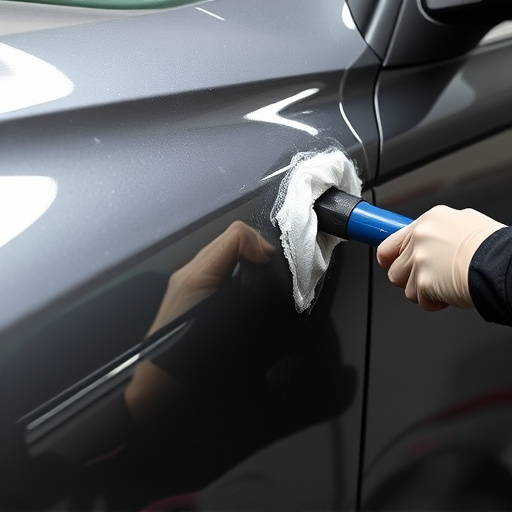
In the realm of Tesla structural repair training, high-voltage safety protocols are paramount to protect both technicians and vehicles. Given the intricate electrical systems within Tesla vehicles, proper handling is crucial to prevent accidents and ensure the integrity of auto glass repair and auto painting processes. Technicians undergo rigorous training to understand the potential risks associated with high-voltage components, learning safe disassembly and reassembly techniques for structural repairs. This includes knowing how to isolate and ground relevant systems to minimize electrical hazards during work on sensitive components.
By adhering to these protocols, automotive body shops can create a safe environment for their staff and maintain the advanced technology of Tesla vehicles. The training emphasizes the importance of maintaining proper safety gear, such as insulated gloves and protective eyewear, throughout the repair process. This holistic approach ensures that not only are structural repairs executed with precision but also that every step taken safeguards both workers and the vehicle’s high-voltage systems, ultimately contributing to a successful and safe Tesla structural repair experience.
Effective Implementation and Continuous Improvement in Training Programs

The effectiveness of Tesla structural repair training programs lies not only in their initial design but also in continuous improvement and adaptation to emerging standards and technologies. Regular updates are crucial to ensuring that technicians are equipped with the most relevant skills and knowledge, especially in the rapidly evolving electric vehicle (EV) industry. By integrating advanced training methods and real-world scenarios, Tesla can enhance its structural repair training’s impact. This includes hands-on practices on car body restoration and fender repair, virtual simulations, and interactive modules that mimic complex high-voltage systems.
Continuous improvement initiatives should focus on gathering feedback from trainees and industry experts to identify areas of enhancement. Such insights enable the refinement of training protocols, ensuring they remain practical and up-to-date. This dynamic approach not only benefits Tesla’s training programs but also contributes to the overall advancement of high-voltage safety protocols in the automotive sector, fostering a culture of excellence in auto painting and structural repair.
Tesla structural repair training is paramount for ensuring both the safety of technicians and the integrity of electric vehicles. By implementing robust high-voltage safety protocols, industry professionals can confidently navigate complex repairs while mitigating potential risks. Continuous improvement in training programs, driven by real-world applications and technological advancements, will ultimately revolutionize Tesla vehicle maintenance, fostering a safer and more efficient industry standard.
